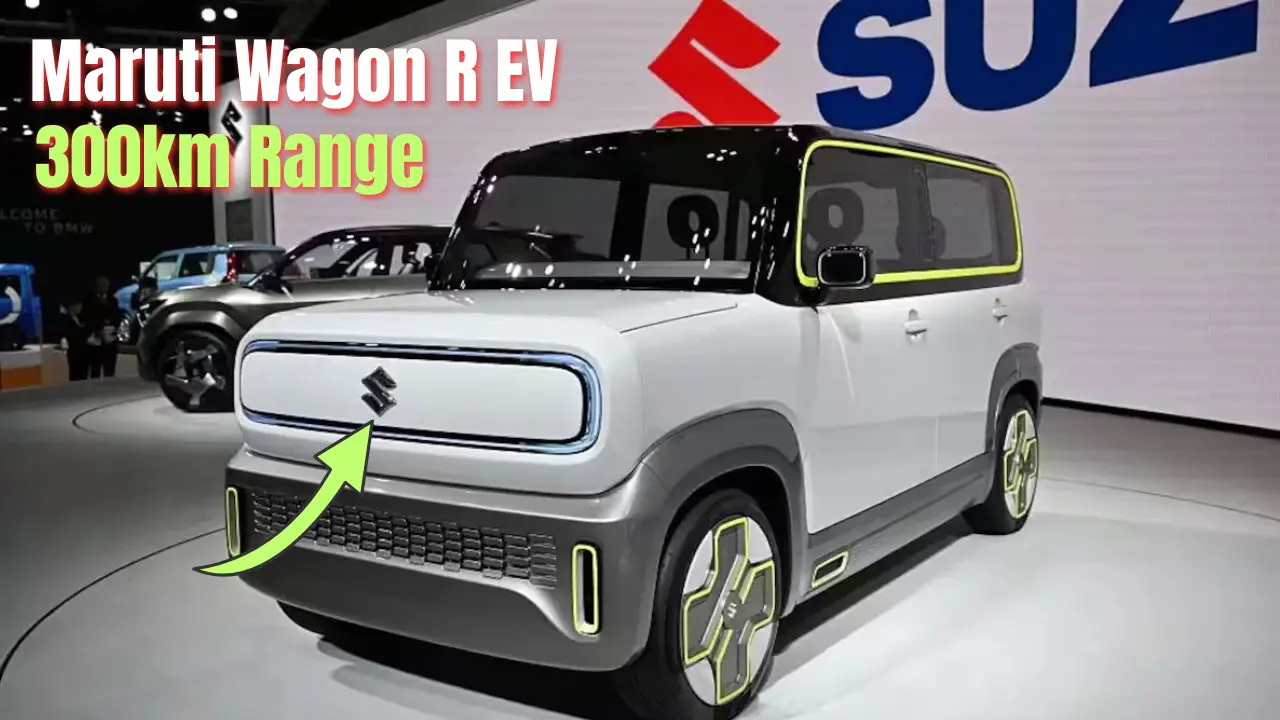Maruti Wagon R EV: Maruti Suzuki is gearing up to electrify India’s best-selling hatchback, the Wagon R, with a full-blown EV version slotting in around the ₹8.5–10 lakh mark. Word is, we’ll see it hit showrooms as early as late 2025 or early 2026, bringing zero-emission motoring to a mass-market price point.
Launch Timeline: When to Expect the Wagon R EV
Maruti’s current road map calls for six new EVs by 2030, and the Wagon R EV is slated to be the second one after the eVX SUV arrives next year. Despite keeping most specs under wraps, the maker has said testing of around 50 prototypes is already underway. If everything goes to plan, deliveries could begin in the January–March 2026 window. It’s a cautious approach—Maruti’s never one to rush a product to market without ironing out the wrinkles—so the timeline could still slip by a quarter or two.
Powertrain and Battery: Balancing Cost and Range
Insiders suggest the EV will ride on Maruti’s new electric platform, packing a 50 kW (around 67 PS) motor paired with a modular lithium-ion battery. Expected capacity? Somewhere between 30–40 kWh, which Maruti claims should crack the 300 km mark on the WLTP cycle. In real-world Indian city driving, figures closer to 200–250 km seem more realistic. Regenerative braking will be on board, plus a 3.3 kW onboard charger for overnight top-ups and DC fast-charge compatibility to hit 80% in about an hour.
Read Also: Upcoming 7-Seater SUVs in India 2025-26: Grand Vitara to MG Majestor
Design and Packaging: Familiar Yet Fresh
Visually, the EV sticks to the Wagon R’s tall-boy silhouette but swaps the cluttered grille for a clean, closed-off nose. There’ll be new bumpers, alloy-style wheel covers, and exclusive EV badging. Inside, it’s the same dual-tone dash you know, but with an updated digital instrument cluster that shows battery state, driving mode and range estimates. A seven-inch touchscreen with Android Auto and Apple CarPlay is pretty much a given, along with safety goodies like dual airbags, ABS with EBD, rear-parking sensors and hill-hold.
Pricing and Positioning: Affordable Electric Mobility
Maruti aims to keep the EV sub-₹10 lakh (ex-showroom), which would make it the cheapest pure EV in India once subsidies are factored in. That undercuts the Tata Tiago EV and MG Comet, while offering a more familiar nameplate and a vast dealer network—Maruti’s strong suits. It’s a classic volume-play: low price, decent range, a trusted service backbone. If the numbers hold, the Wagon R EV will be to EVs what the original was to entry-level hatchbacks.
Competing in the Entry-Level EV Segment
Rivals are lining up. Tata’s Tiago EV claims up to 315 km (ARAI) and starts around ₹10 lakh. MG’s Comet is more of a quadricycle-turned-EV with a shorter range. Mahindra has hinted at an eKUV, but details are scant. Maruti’s advantage? Scale and affordability. Plus, the Wagon R’s boxy shape translates neatly to battery packaging without robbing cabin space.
Why Expertise and Trust Matter Here
Maruti’s well-documented reputation for reliability and low running costs gives it an edge in a still-nascent EV market. After all, a lot of buyers in this segment are first-time EV customers. Transparent warranties—likely eight years on the battery—and clear service plans will go a long way towards building trust.
Maruti’s not just dipping a toe; it’s about to dive headfirst into the mass-market EV pool. If the Wagon R EV delivers on its promise—practical range, rapid charging, and that hallmark Maruti ownership experience—it could be the spark that brings electric motoring within reach of everyday buyers.
